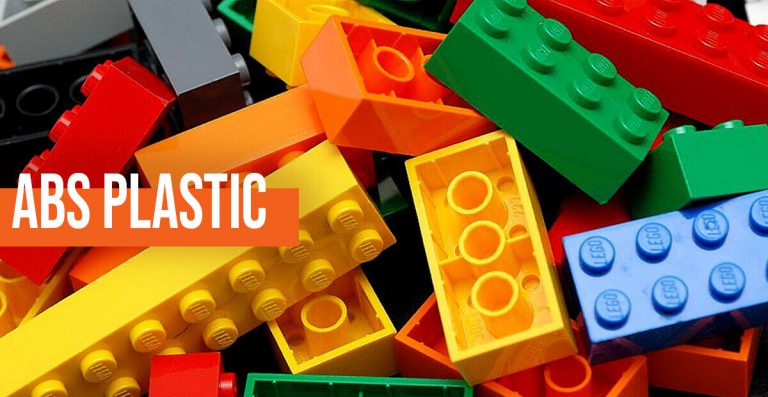How is ABS Plastic Made & Why is it Popular Across Various Industries?
Acrylonitrile Butadiene Styrene (ABS) is a popular type of plastic that is extremely durable and resilient, making it perfect for applications that require high impact resistance. In this blog, we discuss why ABS is a favored choice of plastic for various industrial applications and engineering projects.
Before we proceed ahead, let us understand how ABS is made.
How is ABS Made?
It is manufactured by a process known as emulsion where acrylonitrile and polymerizing styrene are mixed with polybutadiene. The polybutadiene provides an optimum level of durability and the styrene provides ABS with a shiny look.
Industries Where ABS is Preferred:
What makes ABS a popular polymer across industries is its reliable toughness and, cost-effectiveness. Following are some industries where ABS is extensively used.
- Aerospace
- Medicine & Pharmaceutical
- Oil & Gas
- Defense
- 3D Printing
- Material Conveying
- Food Handling
Why is ABS Plastic Popular in Many Industries?
ABS has multiple attributes, making it an excellent choice for various industrial applications. Let us go through the properties to understand why it’s so popular.
- The most vital property as mentioned earlier is the impact resistance and toughness and. However, what makes ABS more interesting is that the impact resistance can be easily modified through modifications. What’s more, we can improve its resistance to heat and toughness by increasing the proportions of polybutadiene in relation to styrene.
- ABS can be easily recycled since it is a thermoplastic material. This is a massive advantage because brand new products can be manufactured by recycling ABS plastics.
- ABS plastics are commonly used for mechanical applications. However, they also have electrical insulation properties. These properties are known to be constant over a wide range of frequencies. They also remain unaffected by extreme temperatures and atmospheric humidity.
- They are resistant to alkalis, concentrated phosphoric, oils, aqueous acids, alcohols, and hydrochloric acids.
- ABS is ideal for 3D printing and prototyping because it provides excellent design flexibility. Furthermore, ABS is dimensionally accurate. This ensures that 3D printed products can be created with immense precision and accuracy.
As you can see, ABS possesses a plethora of properties, making it one of the top choices for various industries. As technology advances, we can expect ABS to be used extensively for manufacturing innovative products.
Leave a Reply Cancel reply
Recent Posts
- Understanding The Materials That Are Used To Build Plastic Toys
- All You Need To Know About Food-grade Plastics
- A Glance At The Materials That Boost The Performance Of Plastics
- Understanding The Importance Of Exploring New Business Opportunities In The Plastic Industry
- Understanding The Importance Of Investing in R&D For The Plastic Industry
Categories
- 3D Printing
- AIPMA
- Automation
- Automobile Sector
- Bio Plastics
- Environment
- Innovations In Recycling
- Latest Innovations
- Molds & Dies
- News
- Packaging Industry
- Plastic
- Plastic Application
- Plastic Industry
- Plastic Market
- Plastic Myths
- Plastic News From The World
- Plastic Packaging
- Plastic Products
- Plastic Recycling
- Plastic Solar Cells
- Plastic Toys
- Plastic Waste
- Plastic World
- Plastics
- Plastics And Their Applications
- Plastics In Agriculture
- Plastics In Healthcare
- Plastics In Medical Industry
- Plasticulture
- Processing Machinery
- Recycling Machines
- Robotics
- Uncategorized
- Virtual Reality
Archives
- November 2023 (3)
- October 2023 (2)
- September 2023 (3)
- August 2023 (3)
- July 2023 (3)
- June 2023 (3)
- May 2023 (2)
- April 2023 (2)
- March 2023 (2)
- February 2023 (2)
- January 2023 (2)
- December 2022 (3)
- November 2022 (1)
- October 2022 (1)
- September 2022 (2)
- August 2022 (1)
- July 2022 (3)
- May 2022 (3)
- March 2022 (2)
- February 2022 (1)
- January 2022 (1)
- September 2021 (2)
- August 2021 (3)
- July 2021 (4)
- June 2021 (4)
- May 2021 (3)
- April 2021 (2)
- March 2021 (4)
- November 2019 (8)
- October 2019 (8)
- September 2019 (8)
- August 2019 (8)
- July 2019 (8)
- June 2019 (8)
- May 2019 (8)
- April 2019 (8)
- March 2019 (8)
- February 2019 (11)
- January 2019 (8)
- December 2018 (8)
- November 2018 (12)
- October 2018 (12)

